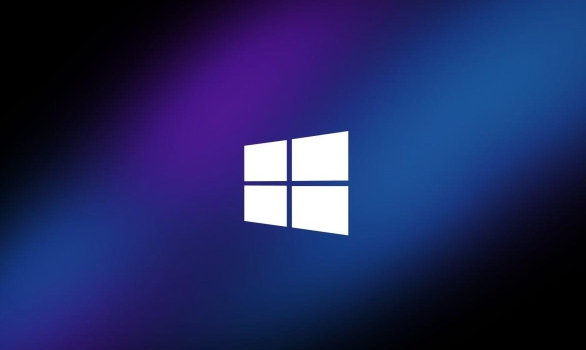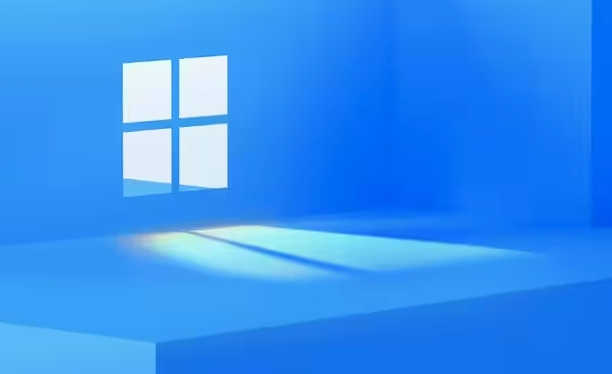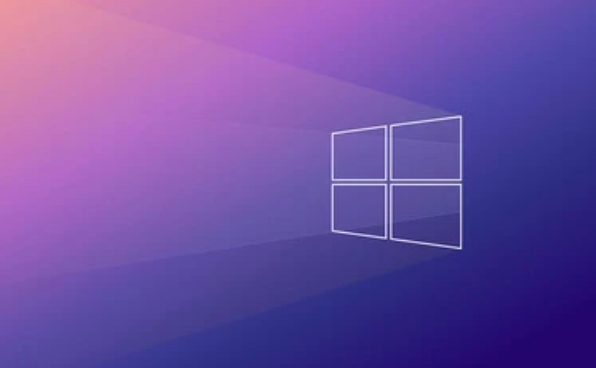How to fix memory management error in Windows
Jul 02, 2025 am 10:54 AMWhen encountering Windows' MEMORY_MANAGEMENT errors, they are usually caused by hardware, drivers or system files corruption. Solutions include: 1. Check whether the memory stick is working properly, clean up the gold fingers and test the memory stick one by one, and use the Windows Memory Diagnostic tool to detect; 2. Update or roll back the graphics card driver, operate through the device manager or manually install the latest stable version of the driver; 3. Check the system file integrity, run the sfc /scannow and DISM /Online /Cleanup-Image /RestoreHealth commands to repair the system files; 4. Disable or adjust the overclocking settings, enter BIOS/UEFI to restore the default frequency or turn off the automatic overclocking function; 5. Check the error log in the event viewer, locate the relevant error information before and after the blue screen, especially Event IDs 41 and 6008. Sequence search usually solves the problem.

Memory Management Error encountered in Windows, usually occurs in Blue Screen of Death (BSOD), and the prompt code is MEMORY_MANAGEMENT . This problem may be caused by corruption of hardware, drivers or system files, and it needs to be investigated step by step if solved. Here are some practical solutions and suggestions.

1. Check whether the memory stick works normally
In many cases, this error is caused by poor contact or damage to the memory stick. You can try the following steps:

- Turn off the computer and unplug it
- Open the chassis, pull out the memory stick, and use an eraser to clean the gold finger part
- Insert the memory stick back to make sure the slot buckle is fully tight
- If there are multiple memory sticks, you can try to test one by one to see which one has a problem
Windows comes with a memory diagnostic tool: Windows Memory Diagnostic , which can be searched and run in the Start menu for memory testing.
2. Update or rollback the graphics card driver
Graphics driver incompatibility is also one of the common reasons, especially NVIDIA or AMD graphics card users are more likely to encounter such problems.

You can do this:
- Press
Win Xand select Device Manager - Expand "Show Adapter", right-click on your graphics card, and select "Update Driver"
- Or select "Properties" → "Driver" tab → click "Rollease Driver"
If you have problems after upgrading the driver recently, rollback is a good choice. You can also download the latest stable version to install manually on the official website.
3. Check system file integrity
Such errors can also be caused by corruption of system files. It can be repaired through the system's own command:
Open Command Prompt as Administrator (CMD)
-
Enter the following command and press Enter:
sfc /scannow
If this command does not find any problem, you can also run:
DISM /Online /Cleanup-Image /RestoreHealth
These two commands are used to scan and repair system files and repair system images respectively. After execution, restart the computer to see if there is still an error.
4. Disable or adjust the overclocking settings
If you overclock your CPU or memory, this may be the source of memory management errors. Especially when the memory frequency is adjusted too high, the system is unstable and it is easy to trigger BSOD.
suggestion:
- Enter the BIOS/UEFI setting interface to restore the default frequency
- Or turn off the automatic overclocking function in the overclocking software
- If you are not sure how to do it, you can find the default settings for the motherboard model.
5. View the error log in the event viewer
Sometimes the source of problem can be located faster through system logs:
- Press
Win Rand entereventvwrto open event viewer - Click "Windows Log" → "System" on the left
- Find the time period before and after the blue screen occurs to see if there are any related error information
Focus on Event IDs 41 and 6008, which are often associated with system crashes.
Basically, these common reasons and ways to deal with them. Although it seems a bit too much, most of the time it is a problem with hardware contact, drivers, or system files. Sequentially checking generally solves the problem.
The above is the detailed content of How to fix memory management error in Windows. For more information, please follow other related articles on the PHP Chinese website!

Hot AI Tools

Undress AI Tool
Undress images for free

Undresser.AI Undress
AI-powered app for creating realistic nude photos

AI Clothes Remover
Online AI tool for removing clothes from photos.

Clothoff.io
AI clothes remover

Video Face Swap
Swap faces in any video effortlessly with our completely free AI face swap tool!

Hot Article

Hot Tools

Notepad++7.3.1
Easy-to-use and free code editor

SublimeText3 Chinese version
Chinese version, very easy to use

Zend Studio 13.0.1
Powerful PHP integrated development environment

Dreamweaver CS6
Visual web development tools

SublimeText3 Mac version
God-level code editing software (SublimeText3)
 How to reset the TCP/IP stack in Windows
Aug 02, 2025 pm 01:25 PM
How to reset the TCP/IP stack in Windows
Aug 02, 2025 pm 01:25 PM
ToresolvenetworkconnectivityissuesinWindows,resettheTCP/IPstackbyfirstopeningCommandPromptasAdministrator,thenrunningthecommandnetshintipreset,andfinallyrestartingyourcomputertoapplychanges;ifissuespersist,optionallyrunnetshwinsockresetandrebootagain
 A guide to custom Windows installation options
Aug 01, 2025 am 04:48 AM
A guide to custom Windows installation options
Aug 01, 2025 am 04:48 AM
Choose"Custom:InstallWindowsonly(advanced)"forfullcontrol,asitallowsacleaninstallthatremovesoldissuesandoptimizesperformance.2.Duringsetup,managepartitionsbydeletingoldones(afterbackingupdata),creatingnewpartitions,formatting(usingNTFS),ors
 How to manage AppLocker policies in Windows
Aug 02, 2025 am 12:13 AM
How to manage AppLocker policies in Windows
Aug 02, 2025 am 12:13 AM
EnableAppLockerviaGroupPolicybyopeninggpedit.msc,navigatingtoApplicationControlPolicies,creatingdefaultrules,andconfiguringruletypes;2.Createcustomrulesusingpublisher,path,orhashconditions,preferringpublisherrulesforsecurityandflexibility;3.Testrules
 Step-by-step guide to installing Windows from an ISO file
Aug 01, 2025 am 01:10 AM
Step-by-step guide to installing Windows from an ISO file
Aug 01, 2025 am 01:10 AM
DownloadtheWindowsISOfromMicrosoft’sofficialsite.2.CreateabootableUSBusingMediaCreationToolorRufuswithaUSBdriveofatleast8GB.3.BootfromtheUSBbyaccessingthebootmenuoradjustingBIOS/UEFIsettings.4.InstallWindowsbyselectingcustominstallation,choosingtheco
 how to fix 'reboot and select proper boot device' on a win pc
Aug 01, 2025 am 05:20 AM
how to fix 'reboot and select proper boot device' on a win pc
Aug 01, 2025 am 05:20 AM
First,checkandcorrectthebootorderinBIOS/UEFItoensuretheWindowsdriveistheprimarybootdevice.2.VerifytheWindowsdriveisdetectedinBIOSunderstorageordrives.3.Ifnotdetected,troubleshoothardwareconnectionsbyreseatingSATAandpowercablesfordesktopsorreseatingth
 How to troubleshoot a failed Windows installation
Aug 02, 2025 pm 12:53 PM
How to troubleshoot a failed Windows installation
Aug 02, 2025 pm 12:53 PM
VerifytheWindowsISOisfromMicrosoftandrecreatethebootableUSBusingtheMediaCreationToolorRufuswithcorrectsettings;2.Ensurehardwaremeetsrequirements,testRAMandstoragehealth,anddisconnectunnecessaryperipherals;3.ConfirmBIOS/UEFIsettingsmatchtheinstallatio
 What are the main pros and cons of Linux vs. Windows?
Aug 03, 2025 am 02:56 AM
What are the main pros and cons of Linux vs. Windows?
Aug 03, 2025 am 02:56 AM
Linux is suitable for old hardware, has high security and is customizable, but has weak software compatibility; Windows software is rich and easy to use, but has high resource utilization. 1. In terms of performance, Linux is lightweight and efficient, suitable for old devices; Windows has high hardware requirements. 2. In terms of software, Windows has wider compatibility, especially professional tools and games; Linux needs to use tools to run some software. 3. In terms of security, Linux permission management is stricter and updates are convenient; although Windows is protected, it is still vulnerable to attacks. 4. In terms of difficulty of use, the Linux learning curve is steep; Windows operation is intuitive. Choose according to requirements: choose Linux with performance and security, and choose Windows with compatibility and ease of use.
 How to solve touchpad not working issues on Windows?
Aug 05, 2025 am 09:21 AM
How to solve touchpad not working issues on Windows?
Aug 05, 2025 am 09:21 AM
Checkifthetouchpadisdisabledbyusingthefunctionkey(Fn F6/F9/F12),adedicatedtogglebutton,orensuringit’sturnedoninSettings>Devices>Touchpad,andunplugexternalmice.2.UpdateorreinstallthetouchpaddriverviaDeviceManagerbyselectingUpdatedriverorUninstal






